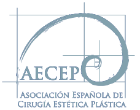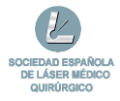Liposuction
Liposuction
Liposuction is a surgical technique that can suppress radical and definitely localized fat deposits. These localized fat deposits which do not disappear with regime food or with physical exercises.
Liposuction can be done in many areas of the body, flanks, hips, abdomen, thighs, knees, calves, ankles, arms and also the back. Advances now allow technicians also to perform at the level of the face and liposuction to the neck. Liposuction is not a method of weight loss and is not intended to control the patient’s weight but to eliminate the fat and restore/return the beauty and harmony to the figure.
What is liposuction?
The principle of liposuction (implemented from 1977 by Yves Gérard Illouz-) is to introduce, a few small incisions, blunt cannulas, tip rounded, not sharp, perforated at the end. These cannulas are connected to a closed circuit within which to create a negative pressure (vacuum). This will make possible an aspiration harmonic and non-traumatic of the fat cells remaining.
To the extent that these cells Fats do not have the ability to multiply, it can ensure that adipocytes fats do not reappear. Liposuction can be done in many areas of the body: flanks, hips, abdomen, thighs, knees, calves, ankles, arms. The advances also now allow technicians to Perform it on the face and neck (double chin, oval face). Recent Developments, Especially in the field of surface liposuction, thanks to the utilization of very thin cannulas makes the skin adjacent to the treated area does not suffer during the liposuction: On the contrary, the appearance of the skin can be improved skin retraction produced by liposuction performed correctly.
However, We Must Remember that liposuction despite in recent years of its trivialization be considered as a real surgery and be done by a skilled and competent plastic surgeon, formed specifically in this technique and practicing in a hospital setting.
Who needs a liposuction?
Liposuction can remove radical and definitely localized fat deposits at Both need all the people who Have this problem. These localized fat deposits do not disappear, generally, nor with diet and physical exercises. By contrast, the Liposuction is not a method of weight loss and is not intended to control the weight of patients. Thus a properly done liposuction does not exclude habits eating rightly, so we can say that liposuction is not a treatment of the obesity.
Technique
Each surgeon has a unique technique that adapts to each case for better results.
However, there are some common principles: The incisions are small (3 or 4 millimeters) and discrete, often hidden in a natural crease of the body. The fat is sucked with blunt cannulas, creating a regular network of tunnels that respect the blood vessels and nerves: the superficial and deep fat is treated. The amount of fat removed will obviously be adapted to the quality of the skin adjacent is one of the determining factors in the quality of results. Iimmediately placed with a garment of acupressure (band/girdle)..
Anesthesia
Liposuction may be performed, as appropriate and the area or areas to be treated under local anesthesia ,local anesthesia with sedation with intravenously administered tranquilizers (anesthesia “awake”), or under general anesthesia, in some cases epidural or spinal anesthesia. the choice between these different techniques will be taken as directed by the surgeon and the anesthetist.
Duration of surgery and hospitalization.
The operating time is very variable, depending on the amount of fat to remove, can be very rapid (45 minutes) for the extraction of fat in the waist, or extended up to three hours in the most important cases. The length of stay depends on the fat aspirated. May be short, a few hours for small lipo (when using local anesthesia). It Is 1 or 2 days in cases of major liposuction (under general anesthesia).
Anesthesia and Hospitalization
Type of anesthesia depends on the area being treated.
Forms of hospitalization: from hours to 1 or 2 days as máximum
The Post-operative.
Is worth noting that the time needed to recover from liposuction is proportional to the amount of fat removed. In the post-operative bruising (bruises) and edema (swelling) occurs at the level of the treated areas, but after a couple of days may down to the ankles.
Pain Depending on the patient varies, But is Not Important Generally, when thin cannulas are used. Depending on the amount of fat removed you may also feel fatigue. Normal activity can be restarted between 4 and 7 days postoperatively, and also depending on the aspirated fat and type of activity. the bruising disappears within 10 to 20 days postoperatively.
The acupressure garment (girdle) must be worn for 2 to 4 weeks.
Sporting activity can be restarted from the 4th week. Convinient not to be exposed to sunlight or UVA, before 3 or 4 months.
There are no major changes in appearance during the first 2 or 3 weeks because initially there is a post-operative swelling of the tissues operated (edema).
Only after the third week after resorption of the edema, the result begins to appear.
Skin takes about 3 to 6 months to fully be retracted on the new volume and readjust to the new silhouette.
Results of liposuction.
The final results are seen at 6 months of intervention are generally excellent, provided the indication and technique have been correct; liposuction will have permanently removed the localized fat deposits, producing a significant retraction of the skin.
Imperfections in the results
In some cases, one can observe some imperfections, without constituting real complications: Correction insufficient residual asymmetry, irregularities on the surface.are generally susceptible to a complementary treatment: A small “touch” of liposuction often performed under local anesthesia from the sixth month after the intervention.
Complications.
Liposuction, although carried out for essentially aesthetic reasons, is a real surgery, which involves the risks associated with all medical procedures no matter how small they are or could be. We must distinguish complications from the anesthesia caused by the act of surgery.
With regards to anesthesia, you should know that this induces reactions in the body sometimes unpredictable, and more or less easy to control.
The fact of using a qualified anesthesiologist practicing in a hospital setting, makes the risks that are assumed to be statistically very low. You have to know, in fact, that the techniques, anesthetics products and the surveillance methods has immensly made y progress over the past 20 years, offering optimal safety, especially when the operation is performed without urgency and on a person who is completely healthy.
With regard to surgery, choosing a qualified surgeon who is competent, trained for this type of operation, limits the maximum risk, without suppressing completely.
The real complications are rare after liposuction of Quality: great rigor in the indications and surgery in practice ensure effective prevention.
For completeness, we mention a few though they are very rare:
Accidents of thrombo-embolic (phlebitis, pulmonary embolism) are the most serious complications. The risk of such accidents is given by the patient’s history. The use of pressure stockings, the early ambulation and eventual anticoagulant therapy help reduce the risk.
The Bleeding is rarely serious except when there is a bleeding disorder associated.
Hematoma (accumulation of blood in a cavity) and seromas, are unusually seen by a liposuction performed correctly.
Infection, which may be severe, is prevented usually by prescribing antibiotic therapy intra-and postoperatively. finally, you can see, metabolic alterations in quantitatively excessive liposuctions
Frequently asked questions about liposuction.
What is liposuction?
It is the elimination of localized fat deposits. It is not a technique surgery to lose weight, but to harmonize the body contour.
What is the technical surgery?
It involves the aspiration of localized fat through incisions of less than an inch, with a cannula which is connected to a vacuum system. Normally, the vacuum is generated by a machine called a liposuctor, sometimes it is performed with a syringe of 60 cc.
What is liposuction?
There is only one surgical technique it is liposuction and thus known in specialized books. Commercially called liposculpture liposuction that is performed with a syringe under local anesthesia. Obviously being a slower process, the Liposculpture is useful to extract a liter of fat, as for higher volumes the Local anesthesia alone is insufficient, and there is no clear justification for not using the liposuctor.
Can you do liposuction with local anesthesia?
Depends on the amount to extracted. The maximum dose of local anesthetic must not be exceeded even if they have a large safety margin. So in the large dose procedures should be very diluted, requiring the assistance of an anesthetist to disconnect the patient and administer sedation and analgesia. Sometimes it is advisable to use general anesthesia or epidural.
Is the operation painful?
The intervention is always done in a half hospital with all the resources so that patients suffer the minimum in this type of proceedings. Patients describe the discomfort as a strong soreness in the area treated.
How is the post- surgery?
We recommend 48 hours with some rest, since it is in this period in which the patient is in the most painful period. Either way the analgesics which will be administrated to you causes less discomfort and improves the pain greatly. also during these hours often staining of the girdle is common because the local anesthetic infiltrated during the intervention comes from the incisions. This should not alarm you and when this occurs it is even beneficial. After the first two days the patient showers and starts leading a normal life wearing a garment of compression (band/girdle) for a month.
When will you see the results?
Between the third and sixth week, depending on the treated area. Then at the waist area it will be in three weeks and in the abdomen in a month and a half. The result will appear gradually. And then we will have to wait another month and a half for the skin to adapt its final look and feel.
What complications may this procedure have?
Generally, people who undergo this type of surgery are healthy patients, and since no vital organs are reached, the risks are minimal. It is noteable that where there is a wound it is possible that it can become infected. So for this reason we take all measures to avoid the contamination of the incisions.
How long are the results?
After puberty, the number of adipocytes are not increased, Thus when we extract fat to reshape a zone, there is no possibility of the return of the adipocytes as it has been removed. So, we say that the results are permanent as long as the patient does not gain weight significantly.









